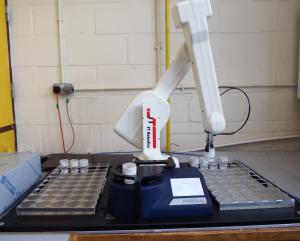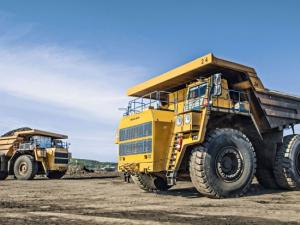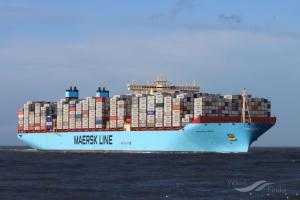Another innovation from ST Robotics for 2023
Integrated oil analysis sample handling system
Serial inventor David Sands who designed the system says “This is another innovative solution unique to ST Robotics. It saves a lot of time for laboratories that monitor large numbers of oil samples.””
PRINCETON, NEW JERSEY, USA, October 18, 2023 /EINPresswire.com/ -- Big mining machines, ocean going container ships and similar machines all use massive Diesel engines.— Dr. David Sands. CEO
If one of these engines fails it's in big trouble.
The oil in these engines is like the engines blood. So owners do blood tests! IE they take samples of the oil and test for contaminants. The 1000s of ships and machines in use mean 1000s of regular samples. This is known as condition monitoring.
A popular device for measuring these contaminants is the Analex pqL analyser, originally designed by Kittiwake. It measures particle contaminants on the common pq scale. The problem is it was primarily designed to be operated manually in a laboratory with an operator feeding sample bottles to it one at a time. Software is already available such as Auxilium or Simplex to read results into computer files direct from the pqL instrument but the device still needed samples to be placed on it one at a time by hand.
ST Robotics first automated this system for OelCheck using the R19 cylindrical robot arm but later changed to the R17 articulated robot arm. A number these were sold world wide to customers who already own a pqL instrument but also some systems included a new pqL. A major customer in Australia was Hastings Deering and systems were also supplied to Finning in the UK. Each system needs the user to set up the system in their laboratory and program the coordinates of the trays and the instrument in situ.
ST now has a distributor in Australia, LogicOil (https://www.logicoil.com/) who do this task for Australian users.
ST Robotics has designed an integrated system comprising a rigid baseplate carrying the robot arm, the pqL and two trays for sample bottles. All the positions are pre-programmed. You just set up and go. The robot arm model used is the R17HS that is extremely fast, maximizing the sample throughput.
The system works like this:
The robot picks up a bottle from a tray and places it onto the pqL instrument
The instrument measures the sample which runs round a ramp ready to be picked up again by the robot.
When measured the robot picks it up and puts it back in the tray.
To maximise the thruput the robot always has one bottle in hand to immediately place on the instrument before getting the previous completed one to return to the tray. Whenever possible a bottle is being moved like a juggling act.
The serial output from the pqL instrument goes to the customer's Auxilium or Simplex software but is also connects to the robot controller so the robot knows when a sample is complete and ready to be replaced in the tray.
For more information please see our website or contact Sands Technology International, Princeton, New Jersey, USA or ST Robotics Ltd., Cambridge, UK.
David Sands
ST Robotics
+1 609-584-7522
email us here
Legal Disclaimer:
EIN Presswire provides this news content "as is" without warranty of any kind. We do not accept any responsibility or liability for the accuracy, content, images, videos, licenses, completeness, legality, or reliability of the information contained in this article. If you have any complaints or copyright issues related to this article, kindly contact the author above.



